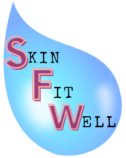Post-inflammatory erythema is a skin condition characterized by red and inflamed skin. The sun can actually make it worse. Therefore, it is imperative to use a high PPD sunscreen to protect the skin from further inflammation.
Table of Contents
What is Sunscreen?

Most of us are familiar with the term sunscreen – It is a gel, lotion, or cream that can be applied to the skin topically to protect the skin from the sun’s rays.
It contains a variety of sunscreen filters that either absorb or reflect UV rays.
The mechanism of action of these filters depends on whether they are physical or chemical sunscreens. Physical sunscreens are also called mineral sunscreens.
Each of these contains a different type of filter to protect the skin from the sun.
Mineral Sunscreens
These sunscreens contain either one or both of the following filters: titanium dioxide and zinc oxide.
They work by reflecting the sun’s rays, preventing the skin from being burned from the harmful UV rays.
These are generally the safest options for acne sufferers as they cause little irritation, are well-tolerated, and do not degrade when exposed to the sun.
Both of these mineral filters provide protection against both UVA and UVB rays.
Chemical Sunscreens
These sunscreens contain chemical filters such as avobenzone, oxybenzone, octocrylene, tinosorb M, and many more.
These filters absorb the sun’s rays and convert it to heat to prevent the rays from penetrating into the deeper layers of the skin.
Chemical filters are usually more cosmetically elegant than mineral filters, but are not as well-tolerated by those suffering from redness.
However, chemical filters can go on the skin more smoothly and sit on the skin better, making them a preferred choice for many.
What is PPD?
PPD stands for “persistent pigment darkening“.
It refers to a method used to measure the level of protection provided from sunscreen against UVA rays.
UVA rays are long wavelength UV rays that penetrate into the deep layers of the skin.
They contribute to photoaging, loss of collagen, increases in pigmentation and are associated with other types of DNA damage and inflammation.
The protection from UVA rays is heightened with an increase in the amount of photostable UVA ray filters added to sunscreens.
This measurement of the protection provided is evaluated by the PPD method in vivo (tested on living organisms).
This is done by gathering a group of eligible participants and choosing a patch of skin to be tested. Once the application of the sunscreen is complete, the area of skin is exposed to UVA radiation until a change in colour has been identified.
Using a series of calculations and the time it took for the skin to change under the radiation, the UVA protection factor can be calculated.
This is the PPD number. The higher the number, the better the protection against UVA rays.
Why Is High PPD Sunscreen Important For Post-Inflammatory Erythema?

For a detailed explanation of what post-inflammatory erythema is, read this informational article.
As mentioned in this previous post, post-inflammatory erythema can be exacerbated by the sun’s rays.
Not only does it increase heat in the skin, but also promotes redness and degradation of collagen and weakens the skin’s barrier.
Due to these concerns, it is imperative to protect the skin from the sun’s harmful rays.
The sun gives off both UVB and UVA rays.
While UVB rays are extremely harmful to the skin and can cause skin cancer, UVA rays are not safe either.
UVA rays can contribute to cancer but are heavily associated with photoaging, pigmentation, and inflammation as it penetrates the skin easily into the dermis.
Using a sunscreen that has high UVA protection can decrease inflammation, lessen post-inflammatory erythema, and prevent skin barrier damage, which helps to heal redness faster.
Unfortunately, most sunscreens on the market do not have high UVA protection.
While many sunscreens are “broad-spectrum”, meaning they provide protection from both UVA and UVB rays, the protection from UVA rays can be quite low. This is where PPD comes into play.
High PPD Sunscreens For Post-Inflammatory Erythema
BEST BUDGET HIGH PPD SUNSCREEN |
|
| Garnier Ombrelle Facial Sunscreen With Mexoryl Technology |
|
BEST HIGH PPD SUNSCREEN WITH NO WHITE CAST |
|
| Altruist Dermatologist Sunscreen SPF 50 |
|
BEST EUROPEAN HIGH PPD SUNSCREEN |
|
| La Roche Posay Shaka Fluid SPF 50+ |
|
BEST OVERALL |
|
| Bioderma Photoderm Milk High Protection SPF 50+ |
|
Reference
Comprehensive Review of Ultraviolet Radiation and the Current Status on Sunscreens – PMC (nih.gov)

